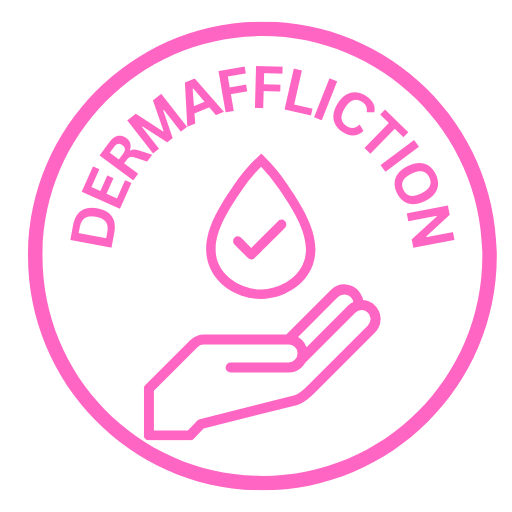Latest Psoriasis Coverage Percentages: What You Need to Know
Psoriasis Coverage Percentage
Psoriasis is a chronic autoimmune condition that affects the skin, causing red, scaly patches to develop. It is estimated that around 125 million people worldwide are living with psoriasis. The severity and extent of psoriasis can vary from person to person, and assessing the Psoriasis Coverage Percentage is crucial in understanding the impact and management of the condition.
The Basics of Psoriasis
Psoriasis is a skin disorder characterized by the rapid buildup of skin cells. The most common type is plaque psoriasis, which appears as raised, inflamed patches covered with silvery scales. Other types include guttate, inverse, pustular, and erythrodermic psoriasis. The exact cause of psoriasis is unknown, but it is believed to be a combination of genetic factors, immune system dysfunction, and environmental triggers.
Psoriasis can have a significant impact on individuals’ quality of life. The visible symptoms, such as red, itchy, and painful patches, can cause embarrassment, discomfort, and even depression. In severe cases, psoriasis may lead to joint inflammation (psoriatic arthritis) and increase the risk of other health conditions, such as cardiovascular disease.
Assessing Psoriasis Coverage Percentage
Psoriasis Coverage Percentage refers to the extent of the body surface area affected by psoriasis. It is an essential parameter for evaluating the severity of the condition and determining the appropriate treatment approach. Measuring the coverage percentage allows healthcare providers to monitor disease progression, assess treatment efficacy, and make informed decisions regarding therapy adjustments.
There are several methods to calculate psoriasis coverage percentage. The most common approach is the Rule of Nines, which divides the body into sections representing 9% of the total body surface area. Another method involves using specialized imaging technology to visualize and measure the affected areas accurately.
Factors Influencing Psoriasis Coverage Percentage
The coverage percentage of psoriasis can be influenced by various factors, including genetic predisposition, environmental triggers, lifestyle choices, and healthcare access.
Genetic factors play a significant role in psoriasis development. People with a family history of psoriasis are more likely to develop the condition and may have a higher coverage percentage.
Environmental triggers such as stress, infections, smoking, and certain medications can aggravate psoriasis symptoms and increase the coverage percentage. The severity of psoriasis can also fluctuate with seasonal changes.
Lifestyle choices such as diet, exercise, and stress management can impact psoriasis coverage percentage. A healthy lifestyle, including a balanced diet and regular exercise, can help manage psoriasis symptoms and potentially reduce the coverage percentage.
Healthcare access and availability play a crucial role in psoriasis management. Adequate access to healthcare services, including dermatologists and specialized treatments, can help individuals with psoriasis receive timely and effective care, leading to better coverage outcomes.
Strategies to Improve Psoriasis Coverage Percentage
Improving psoriasis coverage percentage requires a comprehensive approach that focuses on early diagnosis, effective management techniques, lifestyle modifications, and addressing healthcare disparities.
Early diagnosis is key to achieving better coverage outcomes. Recognizing the symptoms of psoriasis and seeking medical help promptly can lead to timely intervention and prevent further spread of the condition.
Effective management techniques such as topical creams, oral medications, phototherapy, and biologic therapies can help control psoriasis symptoms and reduce the coverage percentage. It is crucial for healthcare providers to tailor treatment plans to each individual’s unique needs and monitor their response to therapy.
Lifestyle modifications can also contribute to better psoriasis coverage. Maintaining a healthy weight, avoiding triggers like smoking and excessive alcohol consumption, and managing stress levels can help manage psoriasis symptoms and potentially reduce the coverage percentage.
Addressing healthcare disparities is essential in ensuring equal access to psoriasis treatment. Efforts should be made to increase awareness, improve healthcare infrastructure, and provide financial support to individuals with psoriasis who may face challenges in accessing care.
Case Studies: Successful Psoriasis Coverage Percentage Initiatives
Several initiatives have been successful in improving psoriasis coverage percentage outcomes. These case studies demonstrate the effectiveness of different strategies:
Case Study 1: Implementing Improved Screening Programs – This initiative focused on raising awareness about psoriasis, training healthcare providers in diagnosing and assessing coverage percentage, and implementing regular screenings in primary care settings.
Case Study 2: Mobilizing Support Groups and Patient Advocacy – This initiative involved creating support groups and patient advocacy organizations that helped individuals with psoriasis navigate the healthcare system, access resources, and advocate for improved coverage and support services.
Case Study 3: Enhancing Health Insurance Coverage for Psoriasis Treatments – This initiative aimed to improve health insurance coverage for psoriasis treatments, including biologics and phototherapy. By reducing financial barriers, more individuals were able to access the necessary treatment, leading to better coverage outcomes.
Challenges and Opportunities in Psoriasis Coverage Percentage
Despite progress, several challenges hinder the achievement of optimal psoriasis coverage percentage.
Barriers such as geographic location, limited healthcare resources, lack of dermatologists, and financial constraints can impede individuals with psoriasis from receiving timely and appropriate care. These barriers contribute to delays in diagnosis, inadequate treatment, and higher coverage percentages.
Innovative approaches are necessary to overcome these challenges. Telemedicine and mobile health technologies can improve access to dermatological expertise, especially in remote or underserved areas. Collaboration between healthcare providers, researchers, and policymakers is crucial in identifying and implementing innovative solutions.
Collaborative efforts involving patient advocacy organizations, healthcare professionals, government agencies, and pharmaceutical companies can contribute to enhanced psoriasis coverage. By working together, stakeholders can raise awareness, improve access to care, and advocate for policies that support individuals with psoriasis.
Future Prospects and Research Directions
The field of psoriasis research and treatment is continuously advancing, offering hope for better coverage outcomes in the future.
Promising developments include the exploration of targeted therapies that specifically address the underlying causes of psoriasis, such as immune system dysfunction. These therapies aim to minimize side effects and achieve significant improvements in coverage percentage.
Advances in technology for monitoring coverage percentage can provide more accurate and objective measurements. Imaging techniques, digital health tools, and artificial intelligence algorithms can assist healthcare providers in assessing coverage and tailoring treatment plans accordingly.
Areas for further research and exploration include understanding the genetic and environmental factors that contribute to psoriasis development and severity. Identifying new biomarkers, conducting clinical trials, and exploring novel treatment modalities will pave the way for improved coverage outcomes for individuals with psoriasis.
Conclusion
In conclusion, the Psoriasis Coverage Percentage plays a crucial role in understanding the impact of psoriasis and assessing treatment outcomes. By measuring and improving coverage percentage, healthcare providers can devise personalized treatment plans and enhance the quality of life for individuals with psoriasis. However, achieving optimal coverage is not without challenges, and collaborative efforts are needed to overcome barriers and ensure equal access to care and support. With continuous research and innovation, the future holds promise for better coverage outcomes and improved management of psoriasis.
"Have You Seen Mike Walden's new holistic acne System yet? It's called "Acne No More" I've read the whole thing (all 223 pages) and there's some great information in there about how to naturally and permanently eliminate your acne without drugs, creams or any kind of gimmicks. I highly recommend it - it's very honest and straightforward without all the hype and b.s. you see all over the net these days. Here's the website where you can get more information:
Click Here -->AcneNoMore









